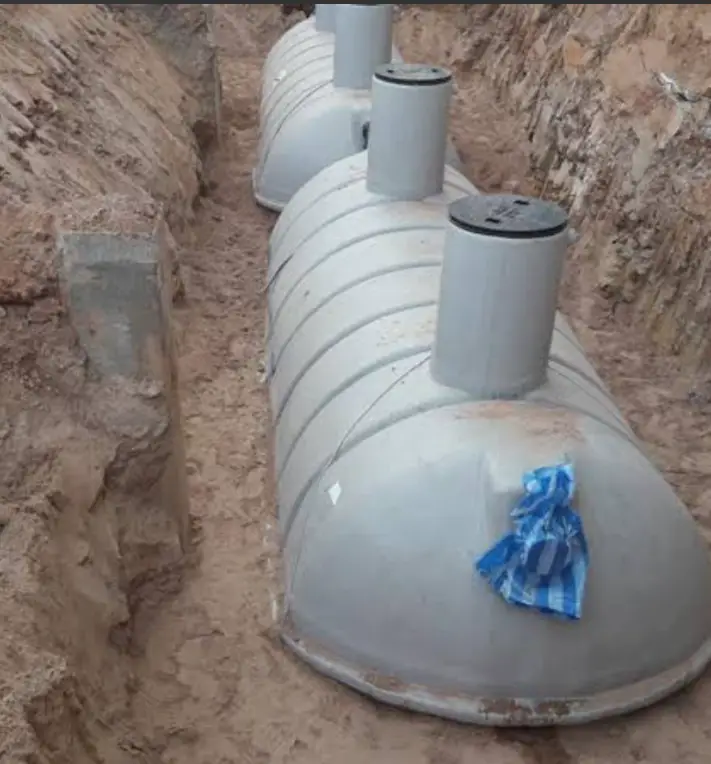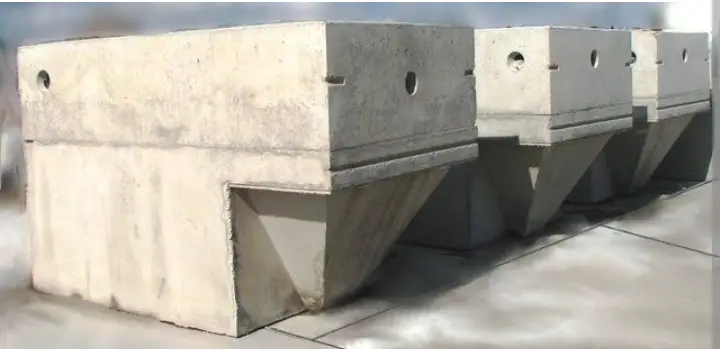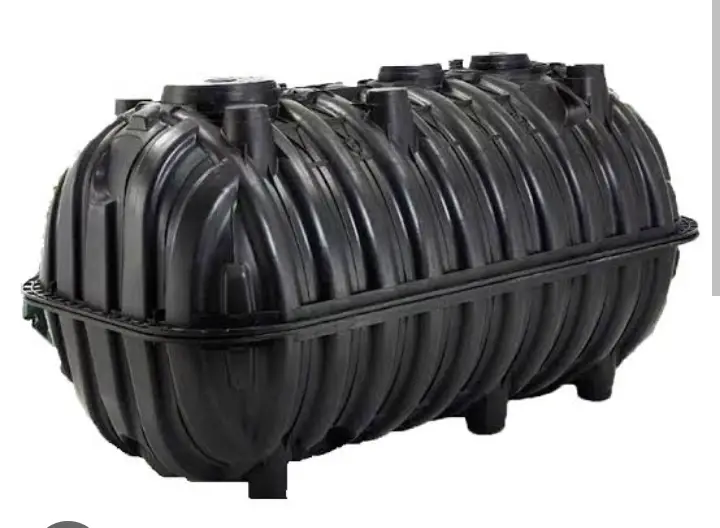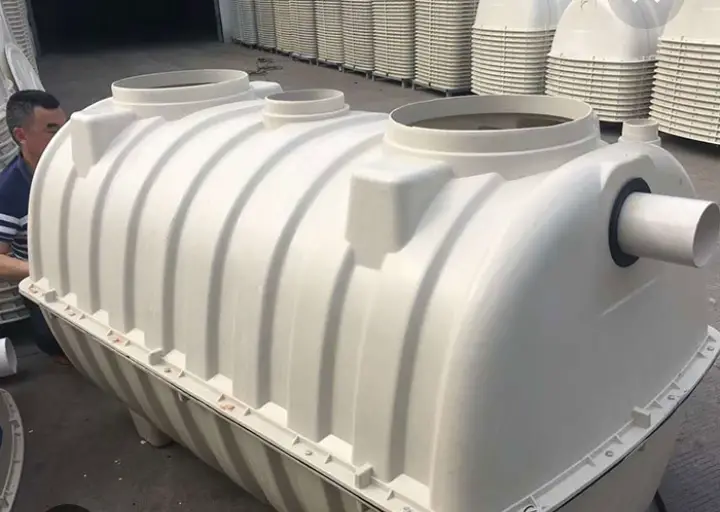There are many different types of septic tanks, and each one has its own advantages and disadvantages. In this blog post, we will explore the different types of septic tanks so that you can decide which one is right for you. We will cover concrete septic tanks, plastic septic tanks, and fiberglass septic tanks. Each one has its own benefits and drawbacks, so be sure to read on to learn more about each type before making a decision.
What is a septic tank?
A septic tank is a watertight chamber made of concrete, fiberglass, or plastic, designed to hold sewage. It is typically used when a home or business is not connected to a sewer system. The tank allows sewage to decompose naturally while holding it in a contained space.
The Different Types of Septic Tanks
There are five major types of septic tanks such as follow:
- Steel septic tanks
- Concrete septic tanks
- Plastic septic tanks
- Fiberglass septic tanks
- Aerobic septic tanks
Steel septic tanks
If you’re looking for a septic tank that’s built to last, a steel septic tank is a great option. Steel septic tanks are made from durable, corrosion-resistant materials, so they can withstand even the most challenging conditions. And because they’re pre-cast, they’re easy to install and require little maintenance. If you’re looking for a reliable and long-lasting septic tank, steel is a great option.
Steel septic tanks are becoming more popular as they offer many benefits over concrete septic tanks. They are extremely strong and durable, so they can withstand heavy loads and are not susceptible to cracking or collapsing. Steel septic tanks also last much longer than concrete septic tanks – up to 50 years with proper maintenance. Another advantage of steel septic tanks is that they are easier to install than concrete septic tanks. They are also lighter in weight, so they can be transported and installed in difficult-to-reach areas.

Concrete septic tanks
Concrete septic tanks are one of the most common types of septic tanks. They are typically made from precast concrete, which is a type of concrete that is cast into a mold and allowed to cure. Concrete septic tanks can be either above ground or below ground.
Above-ground concrete septic tanks are typically less expensive than below-ground concrete septic tanks. Below-ground concrete septic tanks tend to last longer and are less likely to crack or leak. Concrete septic tanks come in a variety of sizes, but the most common size is 1,000 gallons. One thousand-gallon septic tanks can hold the sewage for a three to four-bedroom home.
Septic tank size is important because it needs to be large enough to accommodate the wastewater produced by the home it services. If a septic tank is too small, it will fill up too quickly and will need to be pumped more often. This can be expensive and cause problems for the home’s plumbing system.
Concrete septic tanks can be installed by a professional or they can be do-it-yourself (DIY) projects. While DIY installation may be less expensive, it is important to make sure that the tank is installed correctly so that it functions properly. Improperly installed septic tanks can lead to serious problems, such as leaks, clogs, and even contamination of groundwater.

Plastic septic tanks
Septic tanks made of plastic are becoming more and more popular, as they are easier to install and maintain than their concrete counterparts. Plastic septic tanks are also less expensive, making them a good option for homeowners on a budget. One of the biggest advantages of plastic septic tanks is that they are much lighter than concrete tanks, making them easier to transport and install.
In addition, plastic tanks will not rust or corrode like concrete can over time. This means that they will last longer and require less maintenance over the years. If you’re considering a plastic septic tank for your home, be sure to do your research to find a reputable manufacturer. There have been some reports of inferior-quality plastic tanks leaking or even collapsing, so it’s important to find a tank that is made by a reputable company.

Fiberglass septic tanks
Fiberglass septic tanks are made from reinforced fiberglass, making them extremely strong and durable. They are typically used in areas with high water tables or where space is limited. Fiberglass septic tanks are typically underground tanks that are buried in the ground. The tank size is determined by the number of bedrooms in the home. A typical tank size for a three-bedroom home is 1,000 gallons.
Fiberglass septic tanks have a number of advantages over other types of septic tanks. They are extremely strong and durable, making them less likely to leak or collapse. They are also very lightweight, making them easy to transport and install. Fiberglass septic tanks are also resistant to corrosion and will not rust or rot like other types of septic tanks.

Aerobic septic tanks
Aerobic septic tanks are a type of septic tank that uses an aerobic process to treat sewage. This type of septic tank is often used in areas where there is a high water table or where the soil is not able to absorb the effluent from a conventional septic system.
Aerobic septic tanks typically have two chambers, with the first chamber being used for solids and the second chamber being used for liquids. The effluent from the first chamber flows into the second chamber, where it is treated by bacteria. The bacteria in the second chamber convert the sewage into carbon dioxide, water, and nitrates.
The effluent from an aerobic septic tank can be discharged directly to a surface water body or it can be infiltrated into the ground. Infiltration systems are often used in areas where discharge to a surface water body is not possible or desired.
The different types of septic tank compartments
There are three basic types of septic compartments which include:
1. Single-compartment tank: This type of tank compartment has one chamber that holds the sewage. The sewage is broken down by bacteria in the chamber and the effluent is then discharged into the leach field.
2. Two-compartment tank: This type of tank compartment has two chambers that hold the sewage. The first chamber breaks down the sewage and the effluent is discharged into the second chamber. The second chamber further breaks down the effluent before it is discharged into the leach field.
3. Three-compartment tank: This type of tank compartment has three chambers that hold the sewage. The first chamber breaks down the sewage and the effluent is discharged into the second chamber. The second chamber further breaks down the effluent before it is discharged into the third chamber. The third chamber polishes the effluent before it is discharged into the leach field.
How to Maintain a Septic Tank
Septic tanks require regular maintenance in order to function properly. The frequency of maintenance depends on the size of the tank and the amount of sewage it receives.
The following are some tips for maintaining a septic tank:
- Pump out the tank every two to five years.
- Inspect the tank and leach field annually.
- Repair any cracks or leaks in the tank or leach field promptly.
- Do not flush anything other than human waste and toilet paper down the toilet.
- Do not dispose of any chemicals, oils, or grease down the drains.
- Use water efficiently to reduce the amount of sewage entering the septic system.
- Plant trees and shrubs at least 10 feet away from the leach field to prevent root intrusion.
- Do not drive or park vehicles on the leach field.
- Do not allow anyone to dig on or around the leach field.
- Have the septic system inspected if there is any sign of sewage backing up into the home or if the leach field is flooded.
If a septic tank is not maintained properly, it can fail and cause sewage to back up into the home or leach into the ground, contaminating groundwater, and creating health hazards.
How to clean your septic tank
Your septic tank is an important part of your home’s plumbing system. It is a large, watertight container that stores sewage from your home’s toilets, showers, and sinks. The tank is usually buried in your yard and connected to your home’s plumbing system.
Septic tanks need to be cleaned out every three to five years to prevent them from overflowing. Cleaning involves removing the sludge and scum from the bottom of the tank. This can be done by a professional septic tank service or by yourself.
If you decide to clean your septic tank yourself, you will need to rent a pump and hose from a local hardware store. You will also need to put on protective clothing, including gloves, goggles, and a face mask. Once you have all of your equipment, follow these steps:
- Locate your septic tank and find the access lid. This is usually located in the center of the tank.
- Remove the lid and position the pump next to the open hole.
- Connect the hose to the outlet on the pump and lower it into the tank until it reaches the bottom.
- Turn on the pump and let it run until all of the sewage has been pumped out of the tank.
- Disconnect the hose from the pump and remove it from inside the tank. Replace the lid on top of the tank.
- Move the pump to a nearby drain or sewer line and turn it on again. Let the pump run until all of the sewage has been pumped out of the tank.
- Disconnect the hose from the pump and remove it from inside the tank. Replace the lid on top of the tank.
- Rinse out the hose with clean water and store it in a safe place.
- Repeat steps 2-8 until the tank is completely empty.
- Use a garden hose to rinse out the inside of the tank. Be sure to remove any lingering sewage before putting the lid back on.
How to choose the right septic tank
If you are planning to install a septic tank on your property, there are a few things you need to take into consideration in order to choose the right one. The first is the size of your tank. You will need to know the approximate number of people who will be using the system and the amount of water that will be generated daily. The second factor is the soil type on your property.
Different soils have different absorption rates, so it’s important to know what kind of soil you have in order to choose a septic tank that will work with it. Lastly, you need to decide what type of septic tank you want.
There are two main types: concrete and plastic. Concrete tanks are more expensive, but they’re also more durable and last longer. Plastic tanks are less expensive, but they’re not as durable and won’t last as long. Ultimately, the decision comes down to personal preference and budget.
Alternatives to septic tank
If you are looking for alternatives to the septic tank, there are a few options available. One option is the aerobic treatment unit, which uses oxygen to break down waste. Another option is the anaerobic digester, which breaks down waste without oxygen. Finally, there is the constructed wetland, which is a natural system that uses plants and bacteria to treat wastewater.
Conclusion
In conclusion, there are three main types of septic tanks—conventional, aerobic, and anaerobic. Each type has its own set of advantages and disadvantages that you should take into account before making a decision. Ultimately, the best type of septic tank for you will depend on your specific needs and preferences.
FAQs on types of septic tanks
What type of septic tank is best?
There are many types of septic tanks on the market, and it can be difficult to decide which one is best for your home. Here are some things to consider when choosing a septic tank:
1. Size: The size of your septic tank will be determined by the number of bedrooms in your home.
A 1,000-gallon tank is typically sufficient for a 3-bedroom home.
2. Type: There are two main types of septic tanks – concrete and plastic. Concrete tanks are more durable, but they are also more expensive. Plastic tanks are a more economical option, but they may not last as long as concrete tanks.
3. Location: Septic tanks must be installed above ground level so that gravity can do its job. The location of your septic tank will be determined by the layout of your property.
4. Maintenance: All septic tanks require regular maintenance to function properly. Be sure to choose a tank that is easy to access for cleaning and pumping.
What is the average lifespan of a septic tank?
A septic tank is a key component of a septic system, which is a small-scale sewage treatment system. Septic tanks are typically made of concrete, fiberglass, or polyethylene. They vary in size from about 200 to 2,000 gallons (750 to 7,570 liters).
The average lifespan of a septic tank is about 20 to 30 years. However, this varies greatly depending on the materials used to construct the tank, the location of the tank, the maintenance of the tank, and other factors. For example, concrete septic tanks can last for decades if they are properly maintained, while polyethylene septic tanks may only last for 10 to 15 years.
How often should a septic tank be cleaned out?
As a general rule, you should have your septic tank cleaned out every three to five years. However, there are a few factors that can affect how often you need to have it done. The size of your tank, the number of people in your household, and the amount of water you use are all things that can impact how often you need to have your septic tank cleaned out.
If you have a larger household or use more water, you’ll need to have your septic tank cleaned out more frequently. On the other hand, if you live alone or have a smaller household, you can go a little longer between cleanings. Ultimately, it’s important to listen to your septic tank and have it cleaned out when it needs it.
If you’re not sure how often to have your septic tank cleaned out, talk to a professional. They’ll be able to help you determine a cleaning schedule that works for your home and family.
How long can a septic tank go without being pumped?
It is a common misconception that septic tanks do not require routine maintenance. However, septic tanks should be pumped every 3-5 years to prevent solids from buildup and clogging the system. Septic tank pumping removes the solid waste from the tank so that it can continue to effectively treat wastewater. If a septic tank is not pumped, it will eventually fill up with solids and fail. This can lead to expensive repairs or even the replacement of the septic system.
What will ruin a septic system?
If you have a septic system, there are a few things you need to avoid doing in order to keep it functioning properly. Here are four things that will ruin your septic system:
1. Putting the wrong things down the drain – You should never put anything other than human waste and toilet paper down your drain. Avoid putting grease, oil, coffee grounds, or food scraps down the drain as these can clog up your septic system.
2. Flushing non-biodegradable items – Never flush anything other than toilet paper and human waste down your toilets. This includes diapers, sanitary napkins, condoms, and cigarette butts. These items will not break down in your septic system and can clog up your pipes.
3. Overloading your system – Your septic system can only handle a certain amount of waste at a time. If you overload it by having too many people living in your home or by hosting large gatherings, you could end up with a backup.
4. Neglecting maintenance – Your septic system needs to be pumped every 3-5 years to remove the built-up sludge from the bottom of the tank. If you neglect this maintenance, your septic system will eventually fail.

